Every golf course architect sees something different when they look at a proposed site. But it’s safe to say that few designers in golf history have looked at a piece of ground and envisioned the kinds of things that Mike Strantz did. Strantz courses are just different. Because Mike Strantz was different.
Strantz grew up in Ohio, and his keen interest in art and design initially led him to study art in Miami of Ohio’s studio art program. His artistic sensibilities never left him, but he did pivot from the studio art world to earn a degree in turfgrass management from Michigan State. He was working on the grounds crew at Toledo’s Inverness Club when he crossed paths with Tom Fazio, who was updating the course there in advance of the 1979 U.S. Open. Fazio and his associates saw something in Strantz, and invited him to join Fazio’s construction team on a project at Moss Creek in Hilton Head Island, S.C. Over the next eight years, Strantz worked for Fazio on a number of high-profile projects, including Wade Hampton, Lake Nona, Black Diamond Ranch, and the Links and Harbour Courses at Wild Dunes Resort outside Charleston. He studied the work of his Golden Age forbears assiduously—people like Alister MacKenzie, A.W. Tillinghast, Donald Ross, and C.B. MacDonald. He acknowledged their genius and respected their work, but viewed it as a jumping-off point for his own designs, not something to be rotely reproduced.
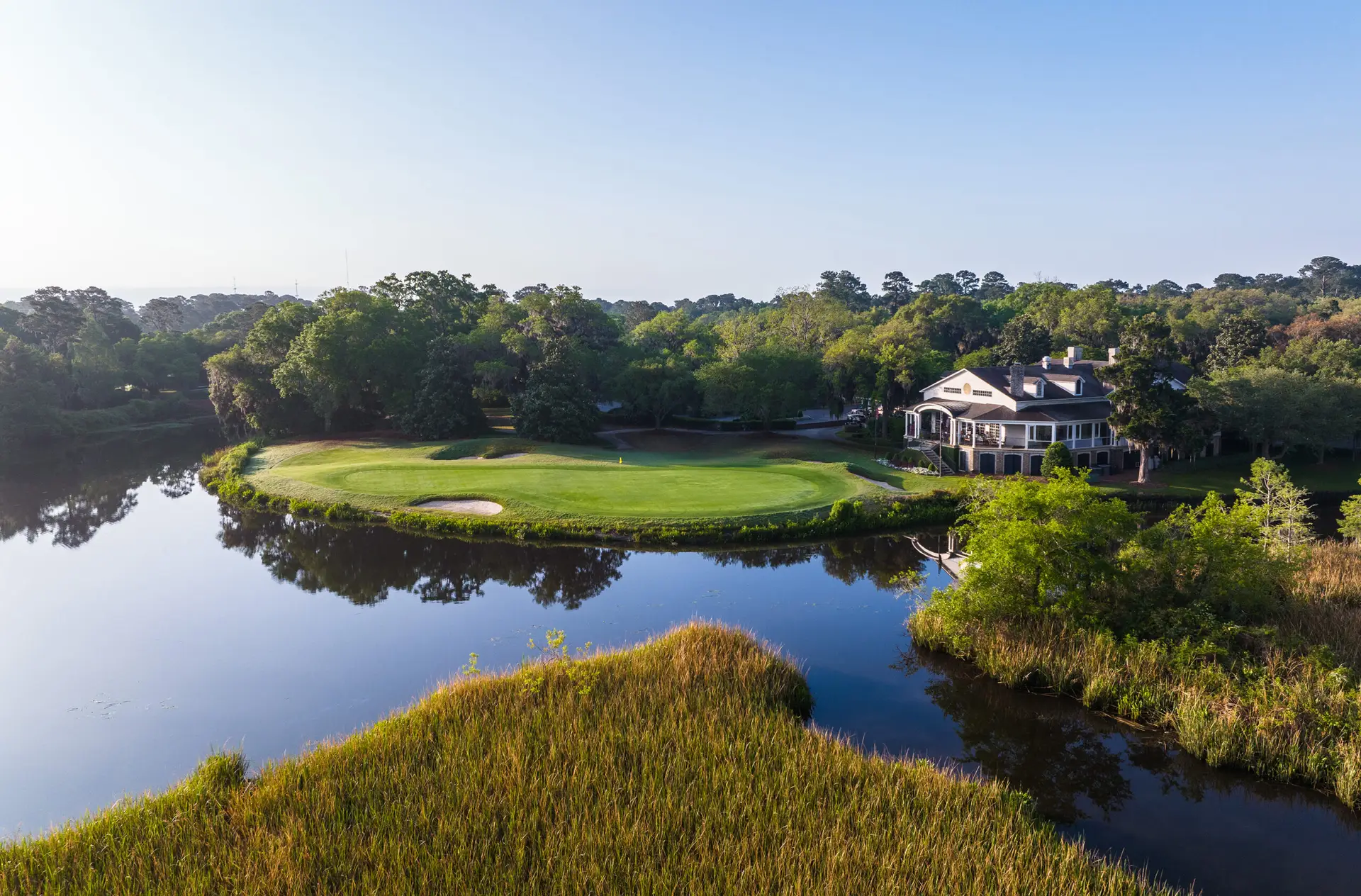
In 1987, Strantz set out on his own, taking on some course construction jobs before creating his own company in 1988. The larger-than-life, long-haired Strantz, with his trademark handlebar mustache, teamed up with PGA Tour veteran Forrest Fezler to create Maverick Golf Design. Together, the two partners—who often surveyed their course work on horseback—gave the golf world some of the most exhilarating, imaginative, and sometimes controversial golf holes and courses it’s ever seen. The company was aptly named. Strantz looked like a maverick and he designed like one, challenging conventions and developing a signature style. Playing it safe was never his M.O.
If you’ve played a Strantz-designed course, you know what I’m talking about. Strantz believed that golf holes should be exciting. Dramatic. Maybe a little scary. Visually wild at times, but always strategically sound. He wanted players not just to see something but to feel something. Sometimes awe. Sometimes glee. Sometimes trepidation. When you walk off the final green at a Mike Strantz course, you’ll never be blasé about the track you’ve just played. You’ll have experienced something unique, thrilling, and those emotions are likely to stay with you long after the last putt is holed. Whether you score well or play poorly, you’ll know you’ve been treated to the output of a unique talent—a man whose singular approach helped usher in the new Golden Age we’re enjoying now with the courses we enjoy from modern-day designers like Tom Doak, Coore & Crenshaw, David McLay Kidd, and others.
Strantz left this world far too soon—he died of cancer in 2005 at age 50. But his legacy lives on. Here are the eight courses that the dynamic duo of Strantz and Fezler gave to the world, most of them located in the Mid-Atlantic. If I were you, I’d do everything possible to play them—no matter where in the world you have to travel from to do so.
Caledonia Golf & Fish Club—Pawleys Island, S.C.
Caledonia was Strantz’s first solo design in 1994, establishing from the get-go that Strantz courses would be different. The fairway contouring, the natural-but-supernatural bunkering, the quirks, the mind games, the artistry—it was all on full display. On land that had once been a hunting and fishing club (as well as a rice plantation) near Myrtle Beach, Strantz created a lowcountry masterpiece routed through centuries-old oaks dripping with Spanish moss, dotted with creeks and ponds, and fringed by sandy waste areas whose shapes often resemble those in Matisse paintings. The 9th hole, a very short par three with a wide, shallow green guarded by huge bunkers in front and tiny ones behind, demonstrates Stantz’s style and guile. The sinuous 18th, with a second shot over water to a green within steps of the plantation-style clubhouse, shows the course’s teeth. Though it’s just 6,500 yards from the tips, don’t let that fool you. It’s a par-70 course with five par fours over 400 yards. Not that the shorter holes play that that much easier. Caledonia established Strantz’s bona fides with a wallop. If you’re visiting Myrtle Beach, it’s a must-play.
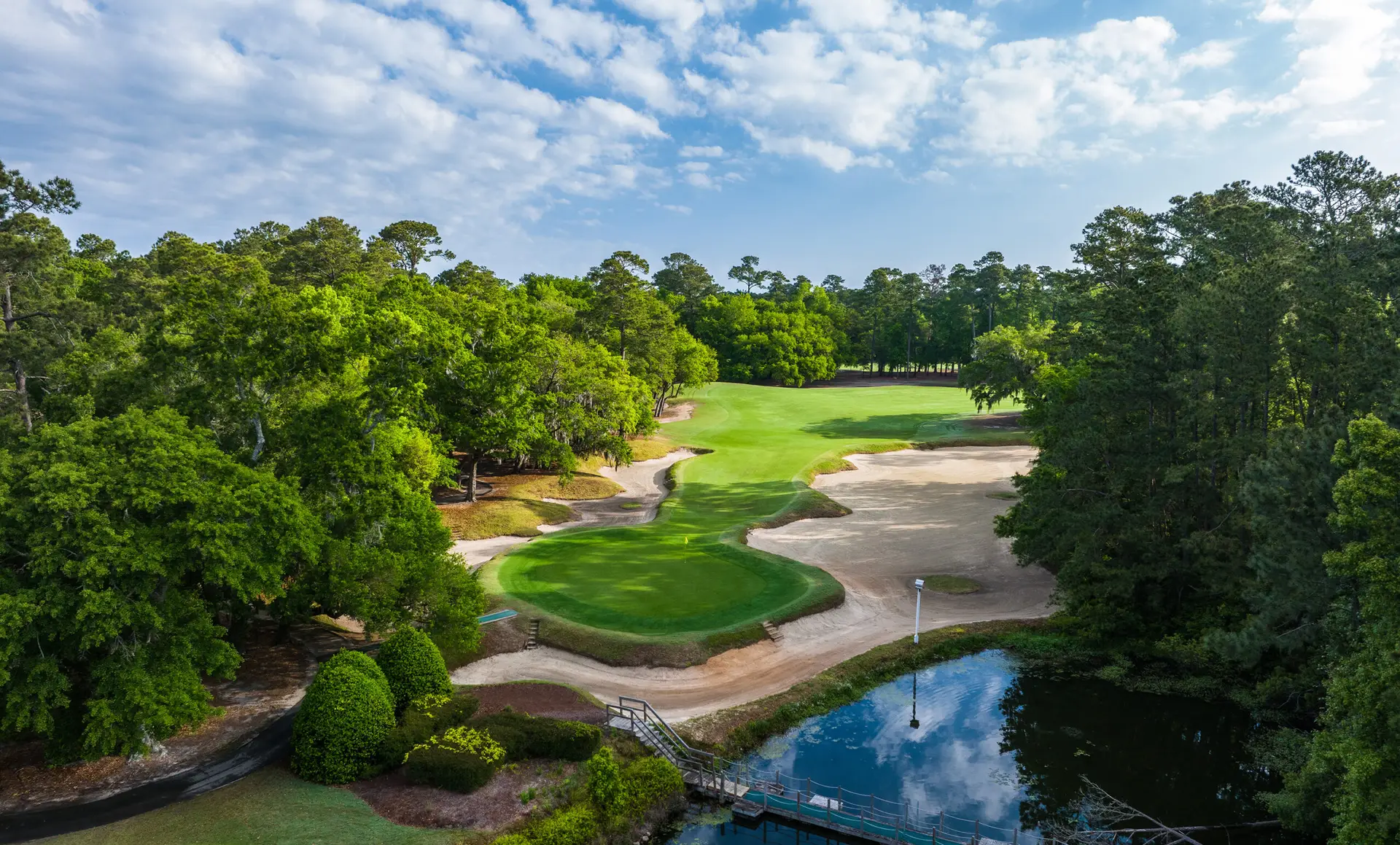
True Blue Golf Club—Pawleys Island, S.C.
Just down the road from Caledonia, Strantz’s 1998 design at True Blue amped up the volume of his creativity, with even bolder shapes, forms, and visual theater. Longer than Caledonia, it tips out at over 7,100 yards. Expect vast fairways, more elevation changes than are common in the Myrtle Beach area, and sweeping bunkers (many of which have steps to get into them). The buttonhook, par-five 4th hole is one that players will never forget, as it circles a water hazard, daring you to cut corners. This risk/reward element is present on many holes at True Blue; Strantz always gives players options. At the thrilling, par-three 3rd hole, your only option is to carry the water, avoid the horseshoe of beach short of the green, and hope that you chose the right club to reach the proper part of the deep-stretched, hourglass-shaped green. Like the rest of the course, it’s exhilarating.

Stonehouse Golf Club—Toano, Va.
Stonehouse earned its best new public course title in 1996. What Strantz created there in the wooded hills northwest of Williamsburg is a mountain-style course with rolling terrain, large pines and oaks, and stand-out features that are Strantz signatures. The fairways are again wide, the bunkers deep, and the large greens are often sited along the edges of natural ridges, making approach shots do-or-die situations. The two-tiered, boomerang-shaped green at the 194-yard par-three 8th hole is vintage Strantz. Higher on the left, lower on the right, the wraparound green hugs a centerline bunker which must be avoided at all costs. Hitting the green is no guarantee of par, either. End up on the wrong side of the green and you’ll be faced with one of the most challenging (and fun) putts you’ll ever have. The closing hole, a 500-yard par five, winds steadily left and demands that you avoid a steep drop-off on the left. It’s brimming with drama, and a fitting conclusion to a course with no shortage of that.
Royal New Kent Golf Club—Providence Forge, Va.
At brawny Royal New Kent, named best new public course in 1997, you can tee it up from over 7,400 yards if you dare. (Think twice before doing so.) The club bills the course as an inland, Irish-style links, and in truth, it certainly has echoes of some of Strantz’s favorite links tracks, like Ballybunion and Royal County Down—only in a hilly and wooded Virginia setting. The fairways are again wide, but they run up, down, and alongside ridges and slopes framed by hills and dunes that both obscure and define the lines of play. There’s tall fescue bordering many playing corridors in which you may be lucky to find your ball, much less advance it. There are more than 100 bunkers of every shape and size; large, multi-tiered and angled greens; and no two holes that are even remotely alike. Its No. 1 handicap hole, the 6th, seems a par-able 428-yard par four on the scorecard, but it plays uphill past high-lipped fairway bunkers to a tabletop, three-tiered green that has no bunkers (and needs none). The club’s motto is “Invicta,” meaning “unconquered,” and its longest tees bear that name. It’s one of the most difficult courses in the state, but choose the right tees, and it’s also a blast.
Tobacco Road Golf Club—Sanford, N.C.
When golf architecture discussions turn to the work of Mike Strantz, Tobacco Road is the course that’s often mentioned first. Built in 1999 on the site of an old sand quarry in tobacco country just north of Pinehurst, Tobacco Road is arguably Strantz’s most adventurous and unconventional course—an 18-hole thrill ride that you never want to get off. It’s a visually stunning course, where just about every hole earns a double-take. The fairways are again pretty wide, but they don’t all look it, especially on the many dogleg holes. There are blind shots here of the kind found more often on links courses in the British Isles that plant additional seeds of doubt. Large dunes factor in frequently, as do deep chasms. The greens take the shape of living creatures that look like they could slither away just as you’re hitting your approach shot. Some of the par fours are drivable, some of the par fives are reachable, but woe be to the golfer who tries and fails, as many of the wildly tumbling greens are elevated and surrounded by deep bunkers and waste areas. The opening hole, a 558-yard par five, sets the stage well. Straightforward tee shot, second shot played to a green that you just get a peek of in the distance past two, towering, sentinel fairway mounds. It’s a course that will baffle and confound, a mystery wrapped in an enigma, and wildly fun.
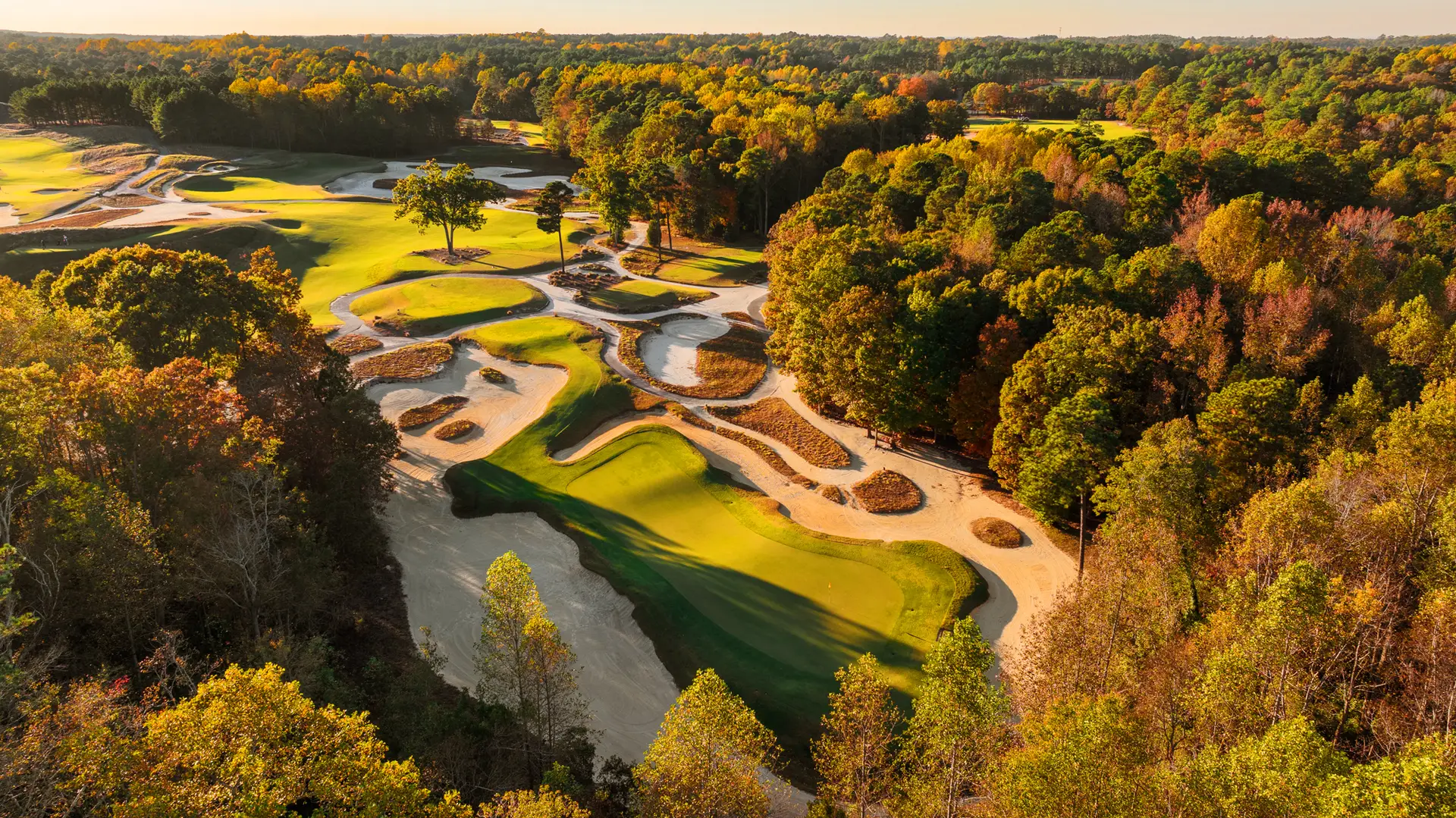
Tot Hill Farm Golf Club—Asheboro, N.C.
All Strantz courses can play tough—especially if you choose the wrong tees. Tot Hill Farm, located an hour from Pinehurst near the North Carolina Zoo, may be the most penal of all his designs for the average player. Sited on and around a “hill” that’s more like a mountain, it’s a course with elevation changes galore. Often, your tee shot will be downhill, making visible all the trouble that awaits. Equally often, your approach shot will be uphill (sometimes severely), to greens guarded not just by sand and fall-offs but by rock outcroppings and streams, the likes of which factor into many holes. The club has restored many aspects of the course that had slipped away since it opened in 2000, including removing trees and enlarging many of its definitively wild green complexes and putting surfaces. Today, the course plays much more as Strantz intended. The par threes really stand out, beginning at the downhill 3rd hole where another Strantz boomerang green awaits, while a creek winds around three-fourths of the putting surface and a blowout bunker protects the other fourth. It’s just one of many mind-benders at Tot Hill Farm.
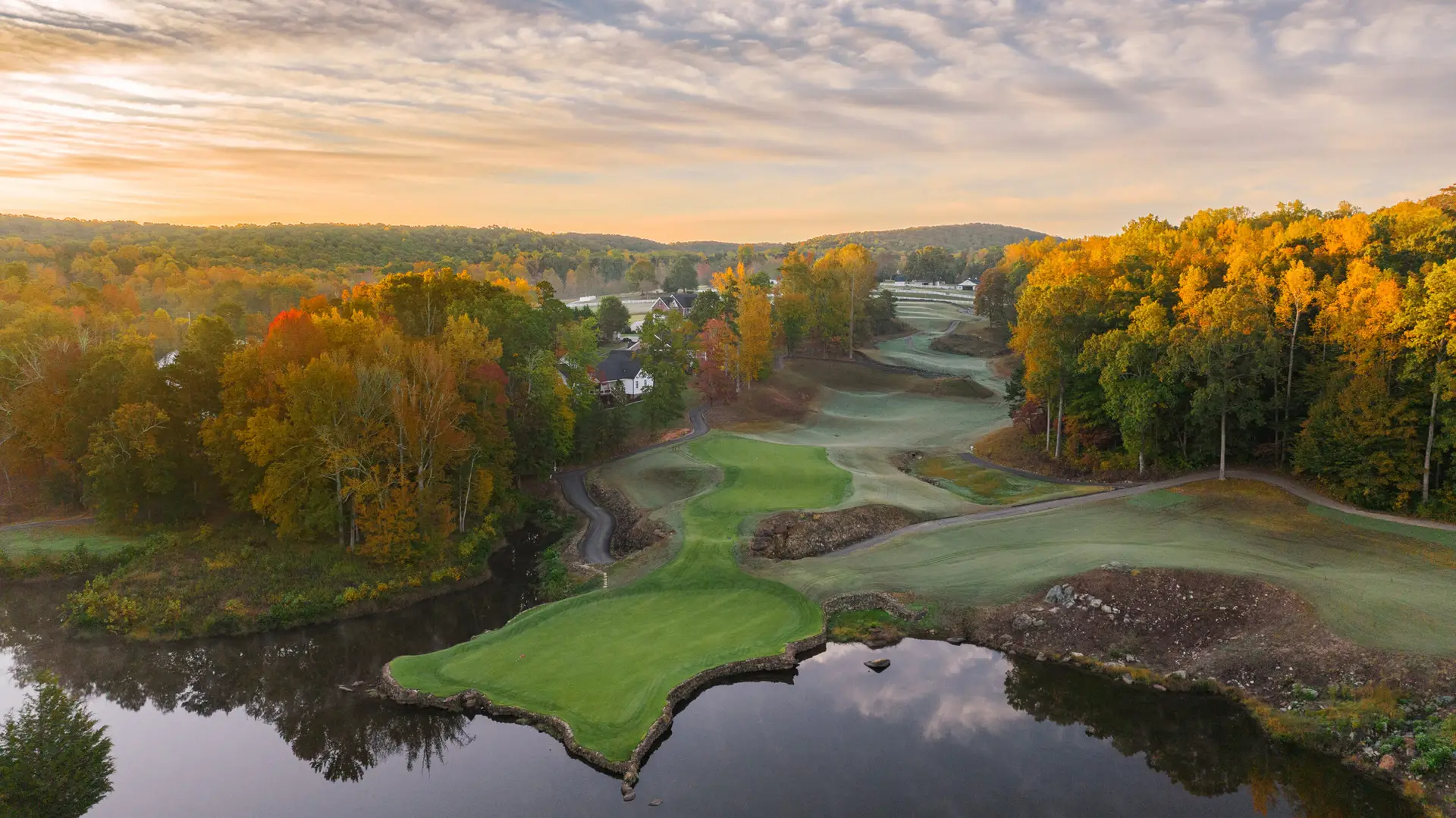
Bulls Bay Golf Club—Awendaw, S.C.
Back in tidal marsh territory at Bulls Bay, an hour north of Charleston, Strantz moved a lot of dirt in 2002 to create stirring elevation changes on Lowcountry terrain that originally had few, including siting the clubhouse on a manmade hill at the center of the property, from which members and guests enjoy a 360-degree view of this private club playground. The fairways are sensibly wide here given the omnipresent wind in this part of the world, and the green designs less idiosyncratic and more subtle than Strantz’s other courses. But it still has its quirks, and Strantz made good use of that clubhouse hill, at which Holes 1 and 10 begin and the 9th and 18th conclude, much in the same way as Shinnecock Hills, which he must surely have had in mind. The green of the 191-yard par-three 14th hole is situated halfway up this hill in a bowl that Strantz sited into it behind two monstrous, yawning bunkers that practically scream at you to take more club. You’ll hear that scream again at the closing hole, a 454-yard par four that plays even longer to its green situated in its own hillside amphitheater. Par that hole and you’re sure to hear applause.
Monterey Peninsula Country Club (Shore)—Pebble Beach, Calif.
Strantz’s last course, which he worked on during his determined battle with cancer, is his only design west of the Appalachians—about as far west as one can get in the continental U.S., right at the edge of the sea roughly halfway between The Links at Spanish Bay and Cypress Point Club. A nice neighborhood to work in, for sure. At MPCC, he picked up the club’s existing Shore Course, shook it by its heels, and put it back down in 2004 as a completely different being, having rerouted it to provide even more beautiful vistas than it originally had—including those up the beach toward neighboring Cypress Point. From the drivable par-four 5th hole on, the sea is in view, and your round is narrated by the sound of barking seals and the squawks of gulls overhead. The course has just eight par fours against five par fives and five par threes, and it’s Strantz’s most subtle, least penal design. A walk in the park by comparison to some others. But members and guests are challenged to keep the ball under the wind and out of the cypress trees and white-sand bunkers, which are plentiful. The course has a dozen holes that could qualify as signature holes, but my vote goes to the par-three 11th, a 181-yarder that starts on an elevated tee looking out toward the ocean and culminates at a wide, two-tiered green guarded all around by sand that seems as if it just blew in off the beach. As with all Strantz courses, it feels natural—but natural the way a man with a keen imagination and unlimited artistic sensibilities would envision it. Along with the club’s Dunes Course, Strantz’s Shore Course makes MPCC one of America’s most elite two-course clubs. Use whatever means are available to you to play a round there.
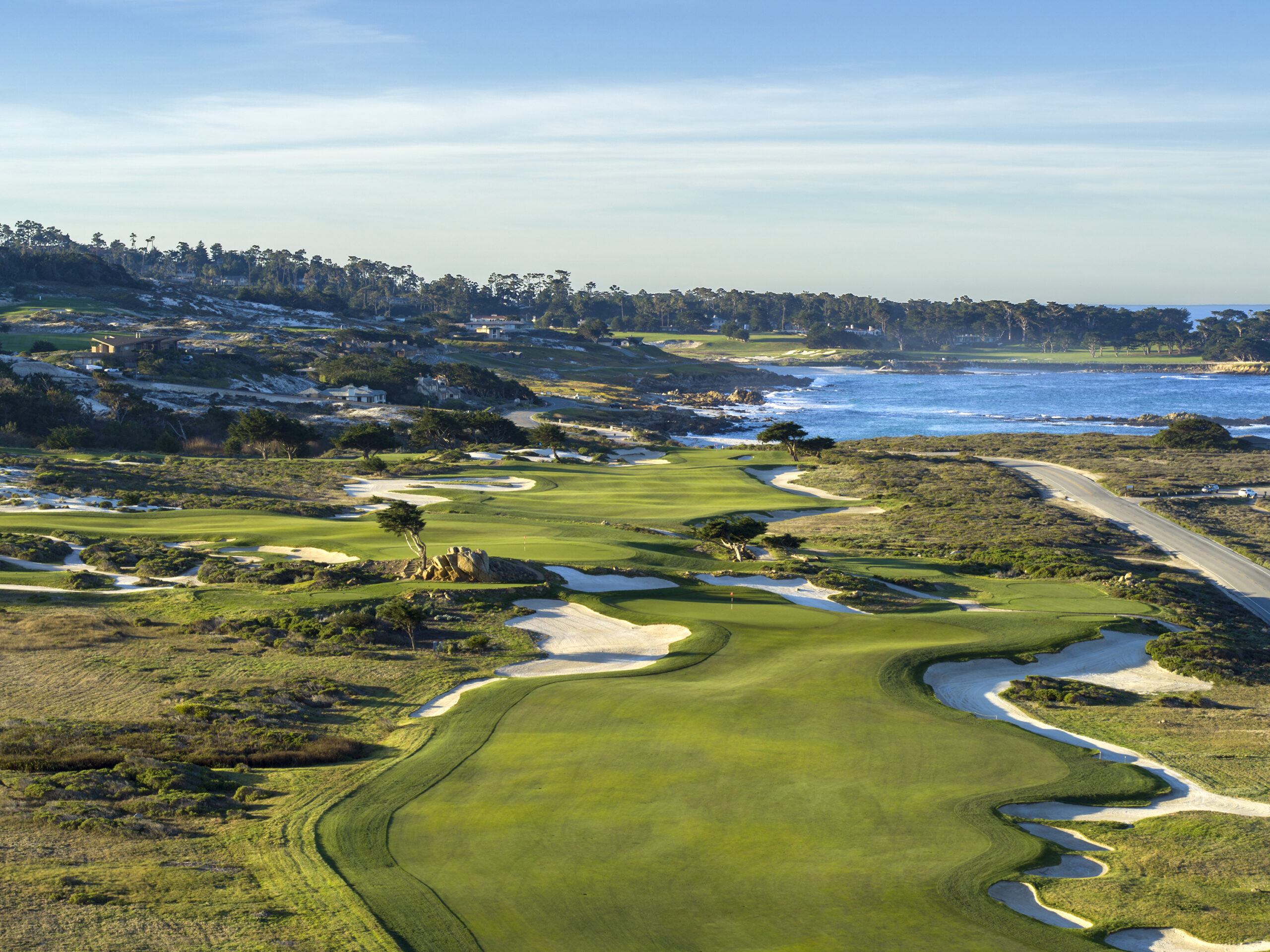
Have you played a Mike Strantz-designed golf course?


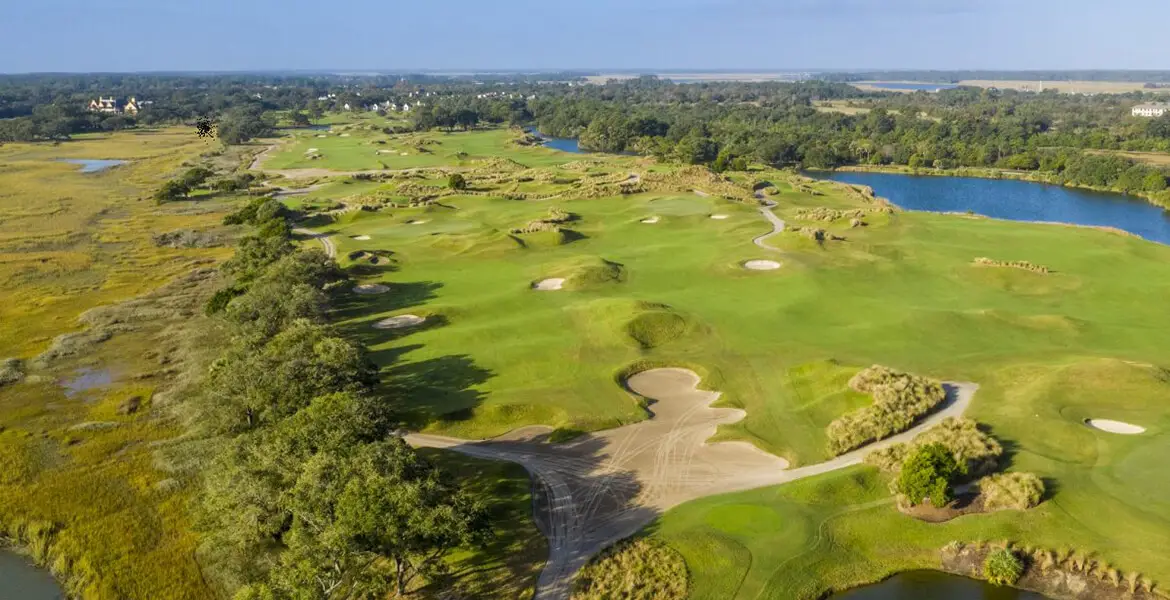
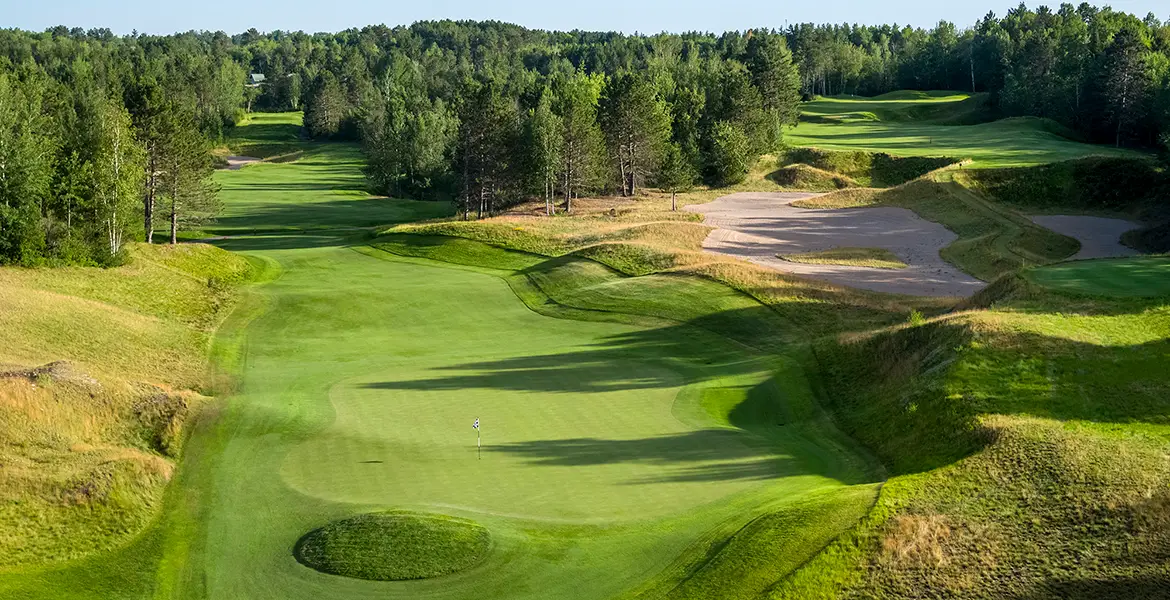


You make Bulls Bay sound far from Charleston (1 hour)! I live right in waterfront park downtown and it only takes me 25 minutes on average
Bulls Bay is exclusive exclusive. I was fortunate to play this past spring with son and his best two
Friends by invitation my daughter in laws firm for his 50th birthday. I have played most of Strantz courses, Bulls Bay is a stunning layout.